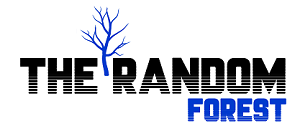Hypoglycemia (low blood sugar levels) is a common complication of diabetes. However, it is occasionally observed in individuals who do not have diabetes or prediabetes. Hypoglycemia occurs when the balance of food, activity, and medications is thrown off. Therefore, do regular health screening and get a rough idea of your body profile.
To help prevent hypoglycemic episodes in people with and without diabetes, it is recommended to eat some foods and avoid others. Some foods that are indicated to increase low blood sugar levels include the following:
-
- Candy
- When patients have hypoglycemia, they should follow the 15-15 rule. Consume 15 grams of carbs to boost blood glucose levels and recheck them 15 minutes later. When the numbers return to normal, consume a snack to maintain your weight loss.
- Carbohydrates in gummy sweets have a significant effect on blood sugar levels.
- To assist in increasing blood sugar, it is advisable to consume between 15 and 30 grams of carbohydrates. When it comes to candy, consider the following: 12 gummy bears, five ring-shaped candies, fifteen fruit-flavoured hard-shelled sweets, four chewy fruit candies, or six giant jelly beans.
- Fat-free milk
- Milk includes vitamin D and carbs; thus, drink one cup of fat-free milk if your glucose levels begin to fall.
- Fresh or dried fruit
- Half a banana, 15 grapes, two tablespoons of raisins, or a small apple or orange provide an enough amount of carbohydrates.
- Fruit juice
- Additionally, fruit juice can help regulate blood sugar levels. Half a cup of your favourite fruit juice, such as apple, orange, pineapple, or cranberry juice, is recommended.
- Honey
- One tablespoon of honey or jam as a snack when your blood sugar levels drop is an effective strategy to restore balance.
If you have been diagnosed with hypoglycemia, you should avoid particular meal types, such as:
- Food that are high in sugar
- It is recommended to avoid simple carbs, regardless of whether you are treating or preventing symptoms, because they can induce a rapid drop in blood sugars due to an increase in insulin levels, which includes:
- Glucose
- Fructose
- Sucrose
- Dextrose
- Food with Fats
- Saturated fat
- Trans fat
- Packaged or processed foods that contain more sugar than fruit juices
- Excess caffeine
- Alcohol (At all costs, avoid consuming on an empty stomach)
Sample Meal Plan
You should consume a modest meal every three to four hours, or four to six times per day. The following are some meal examples that fit inside this meal plan. However, there are numerous foods that adhere to the hypoglycemic diet. Experiment with different combinations.
Day 1
- Breakfast: Oatmeal with Chopped Pecans, Almond Milk or Low-Fat Milk, Blueberries,
- Mid-Morning Snack: Hard-Boiled Egg, Zucchini and Cucumber Slices
- Lunch: Grilled Salmon, Mixed Greens with Avocado
- Afternoon Snack: Peanut Butter and Apple Slices
- Dinner: Grilled Chicken, Brown Rice, Steamed Broccoli
Day 2
- Breakfast: Yoghourt with Strawberries, Whole Grain Toast, Hard-Boiled Egg
- Mid-Morning Snack: String Cheese and Almonds
- Lunch: Shredded Chicken, Shredded Cheese, Veggies Wrapped in Whole Wheat Tortilla
- Afternoon Snack: Brown Rice Crackers, Hummus, Carrots and Peppers
- Dinner: Flat Iron Steak, Grilled Asparagus, Quinoa
Day 3
- Breakfast: Scrambled Eggs with Shredded Cheese, Soy Milk, Mushrooms, and Peppers, Mid-Morning Snack: Low-Fat Cottage Cheese, Blackberries, Raspberries
- Lunch: Turkey and Tomatoes on Whole Grain Bread
- Afternoon Snack: Canned Tuna With Whole Grain Biscuits
- Dinner: Italian Chicken Chilli With Cashews with Spinach
